
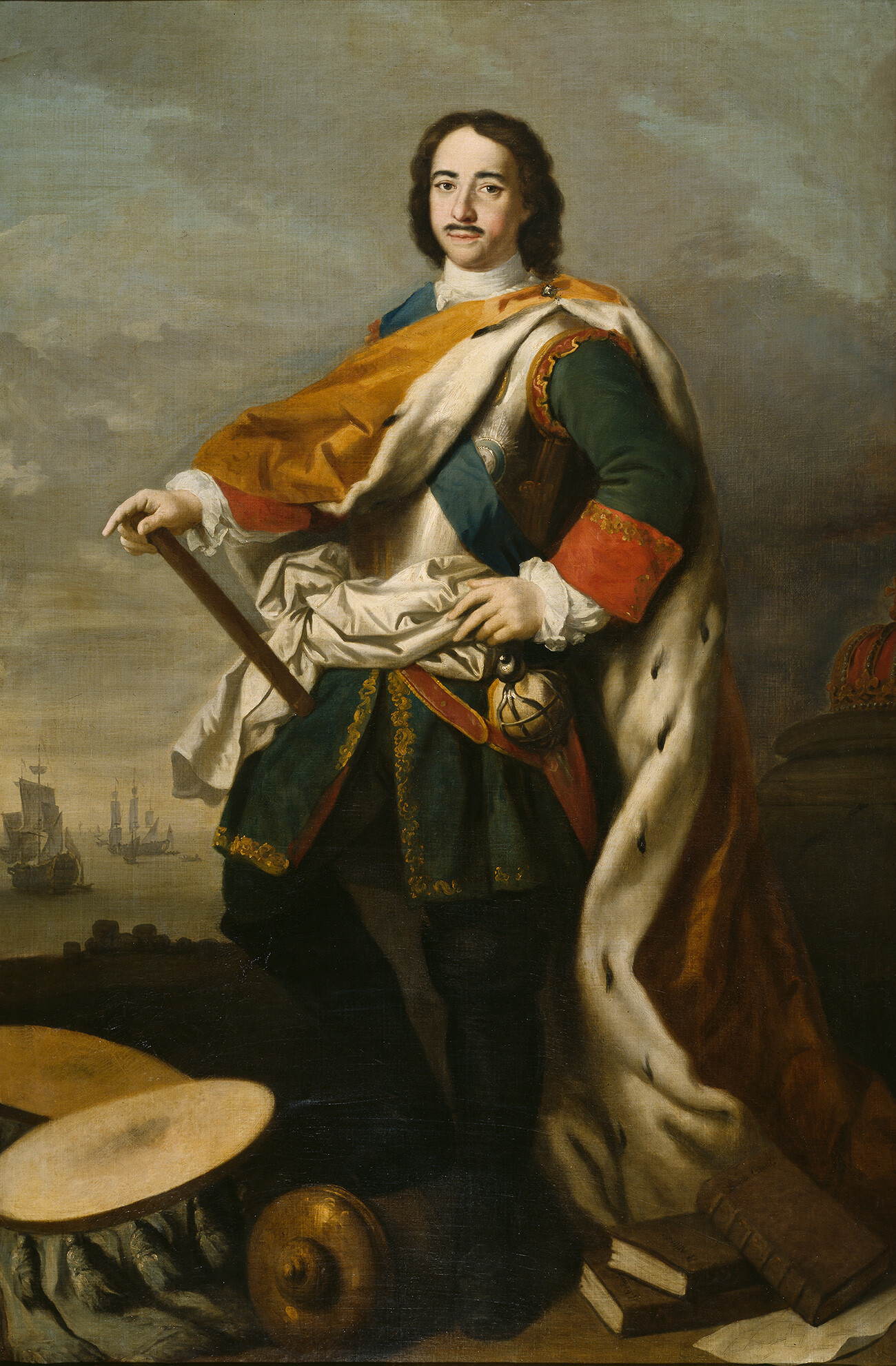
Portrait of Peter the Great
Jacopo AmigoniPeter was the first Russian tsar who drank not in the narrow circle of his entourage, but at assemblies and balls, i. e. in public. Peter, who had been accustomed to European feasts in Moscow’s German Quarter since his teens, did not consider it shameful for himself to be drunk in front of guests, including overseas ones. His father, Alexei Mikhailovich, meanwhile, would order his boyars to get foreign ambassadors drunk, in order to find out diplomatic secrets. And Peter the Great celebrated with foreigners himself.
This is how Danish envoy Just Juel described this process: "When I refused to drink, the tsar himself came up to me, caressed and kissed me, with one hand he clasped my head, with the other he held a glass to my mouth and begged so much, uttered so many kind words that I finally drank wine. More than once, I tried to get away unnoticed, twice I was already in my boat; but, before I could pull away, the tsar descended into it and took me back."
At the celebration of the launch of the ship ‘Derbent’ on August 27, 1724, "his majesty was in a great mood and, therefore, terrible drinking was going on on the new ship," wrote Peter's contemporary, German nobleman Friedrich Berchholz. "The whole company stayed there until 3 a.m.; but, the imperial princesses were allowed to go home before 9 p.m. When they left, even the ladies had to drink heavily; this is why many of them would be ill tomorrow, even though there are some among them to whom a good glass of wine is not at all a novelty. Between the men, when the wine began to have its effect, various quarrels arose and it was not without slaps…"

"The dwarfs' wedding under Peter the Great," by Nikolay Dmitriev-Orenburgsky, 19th century. Peter the Great and his wife, Catherine, can be seen on the left.
Nikolay Dmitriev-OrenburgskyWhen drunk, Tsar Peter could be formidable. On March 17, 1703, he wrote to Count Fyodor Apraksin in Moscow: “I don’t remember how I left, because I was mighty delighted with the gift of Bacchus. This said, I beg everyone whom I have caused vexation to pardon me, especially those who were present at the time of my departure, may this occasion be forgotten…”
Historian Alexander Sharymov explains what kind of "vexation" Peter is talking about here. At a banquet in Moscow, the tsar became angry at Heinrich van der Gulst, the Dutch ambassador to Russia, and "expressed his irritation with a blow of his fist and several blows with the flat of his sword." However, the feast was so lavish that when Count Apraksin began to convey the tsar's apologies to van der Gulst, he replied that he himself "did not remember everything". For Pyotr Alekseevich, who started the day with a glass of vodka and a pickle and could drink his favorite Hungarian and Rhein wines all night long, such cases were not uncommon.
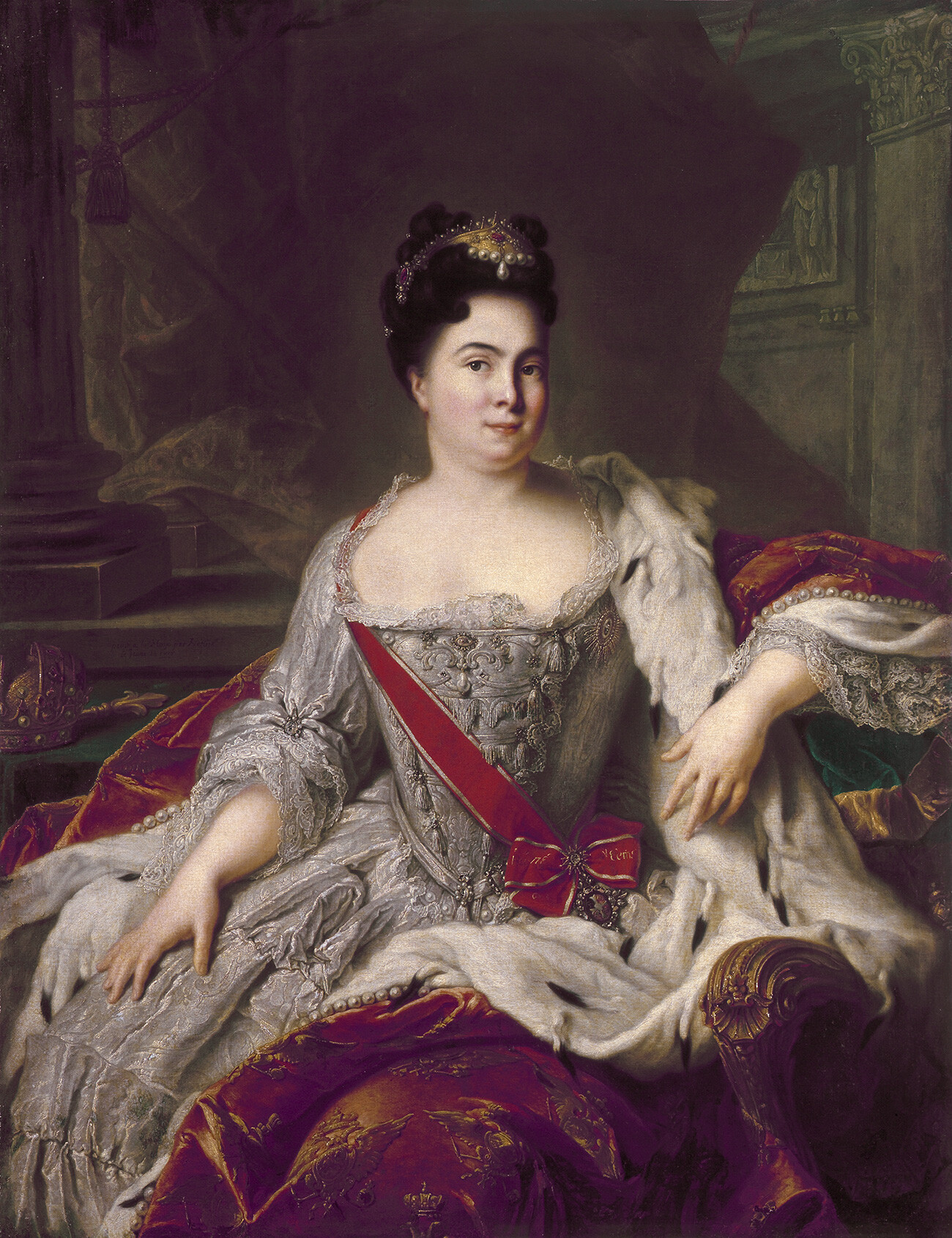
Catherine I of Russia
Jean-Marc NattierThe wife of the first emperor also liked to drink and her habit worsened after the death of Peter the Great. Foreign ambassadors reported home from St. Petersburg that affairs at the Russian court were being resolved extremely slowly, because the empress was "rarely sober". In just two years of rule, the cost of Danzig vodka and Hungarian wine for Catherine's court exceeded one million rubles, despite the fact that the annual income of the treasury was then no more than 10 million.
The secretary of the Saxon embassy, Frensdorf, described the morning visits of Prince Alexander Menshikov to the empress, who once, even before meeting Peter, was a servant of Menshikov himself. "The conversation invariably begins with the question: ‘What would you like to drink?’ After that, several glasses of vodka are drained and the round goes on until the evening; the wine alternates with simple and foreign liqueurs."
The French ambassador Jacques de Campredon wrote: "The tsarina continues to indulge in pleasures with some excess, to such an extent that it affects her health." Catherine, indeed, outlived her husband by only two years – she died of a lung abscess in 1727.
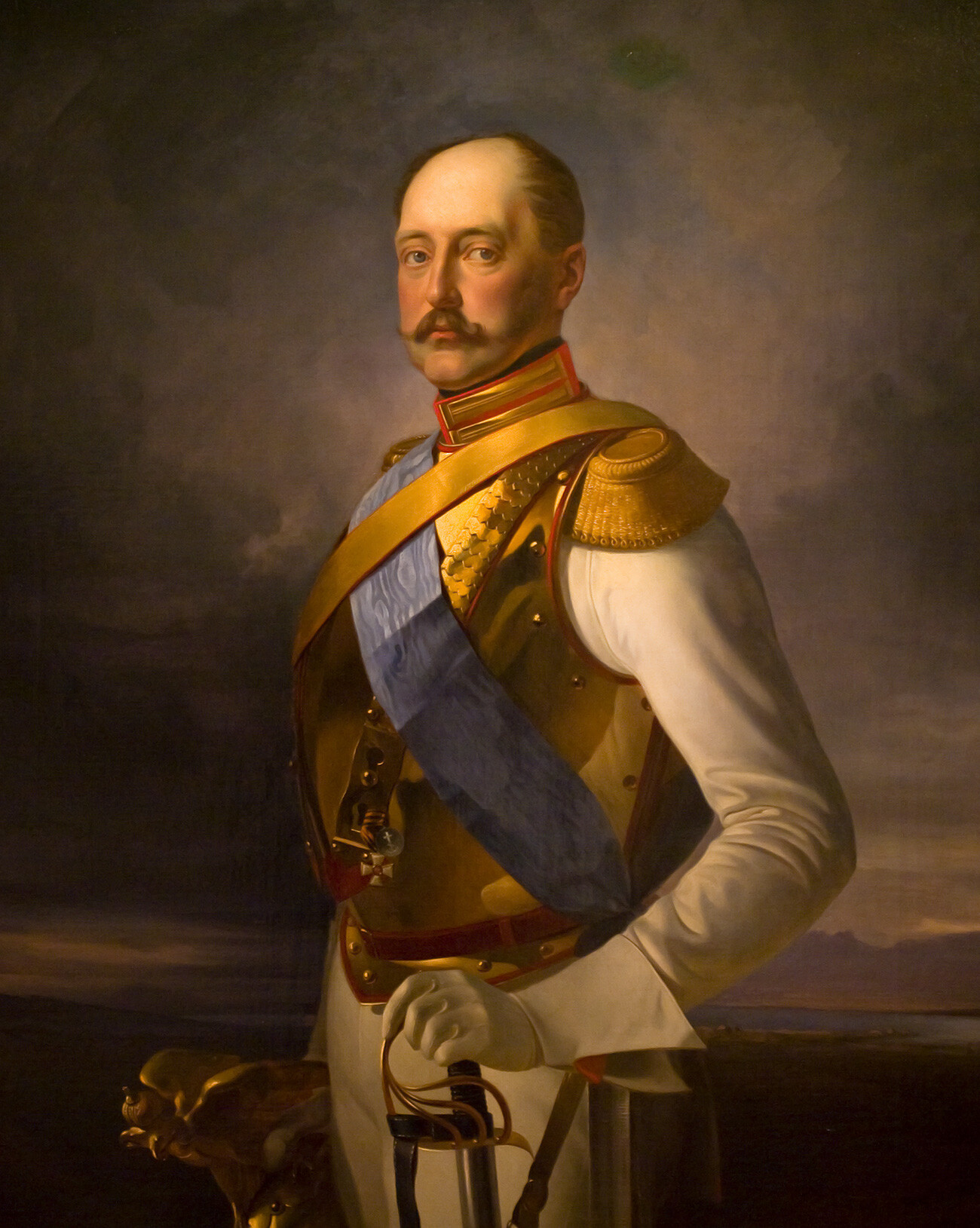
Emperor Nicholas I
Vladimir SverchkovEmpress Anna Ioannovna did not drink at all, while Elizabeth Petrovna, if she drank alcohol, then moderately – apparently, the memory of her father's excessive drunkenness had affected her. Neither Catherine the Great nor her son Pavel nor grandson Alexander were noticed drinking alcohol.
Emperor Nicholas I did not drink himself for entertainment and pleasure. However, wines, vodka and champagne were served at the royal table – for guests and courtiers. In the first half of the 19th century, it was customary to start a court dinner with dry wines and finish with cold champagne. The red wine was taken out of the cellar in the morning to warm it up and the white wine, which was served chilled, was taken out a few hours before lunch. Champagne was served directly from the cellar, from the ice.
Tsar Nicholas himself was almost a teetotaler. Queen Victoria wrote about Nicholas after a personal meeting with him in 1844: "he never drinks a single drop of wine and eats extremely little."
Nevertheless, historian Leonid Vyskochkov found references to those rare moments when Nikolai did have a drink. In 1840, dry wine was served at Nicholas's table for breakfast, a bottle of Saint Julien (Bordeaux dry red wine) for lunch and a bottle of light beer for the evening table. However, it is possible that the emperor ordered wine for one of his guests or somebody from the close circle of his servants.
It is known that the tsar publicly, during solemn events, raised glasses and goblets with champagne – for example, at a dinner in honor of the royal guards or during a speech to students of St. Petersburg University.
Sometimes he also drank strong drinks – but only "for health". Once, during a winter crossing of the Neman River, the tsar's carriage partially went under the ice. The sovereign was also soaked, who then drank a glass of rum to warm up.
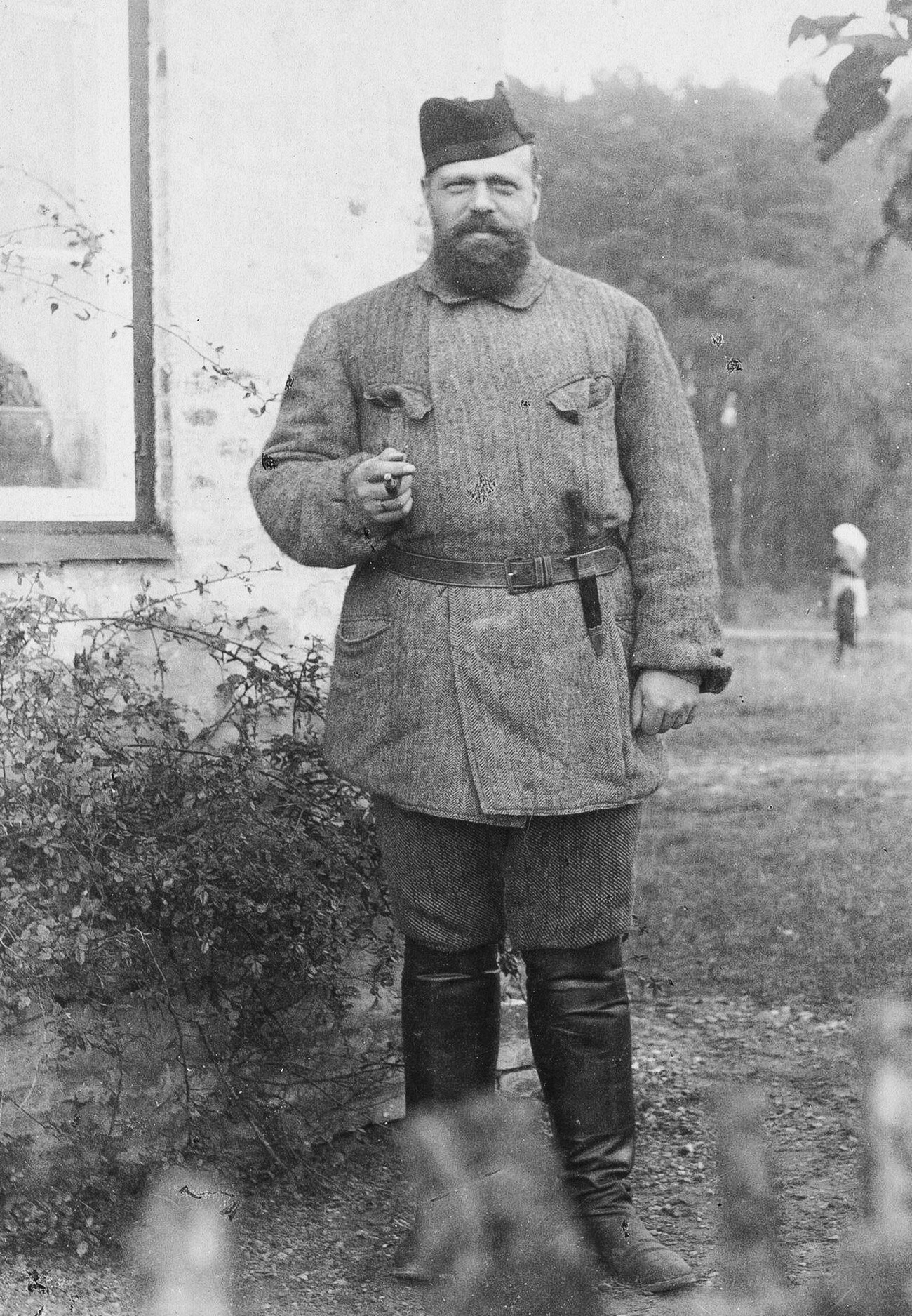
Emperor Alexander III of Russia at his country estate. In his right hand, Alexander is holding a mouthpiece with a lit papirosa (early from of cigarette).
Public domainNicholas's son, Emperor Alexander II, was not particularly addicted to alcohol. In his daily life at court, he preferred Louis Roederer champagne. But, the next emperor, Alexander III, understood alcoholic beverages better.
As Peter Cherevin, the head of the tsar's guard, recalled, "The Emperor liked to drink, but ‘in good time’. He could drink a lot without any signs of intoxication, except that he became unusually cheerful and playful, like a child. In the morning and afternoon, he was very careful about intoxicating drinks, trying to keep a fresh head for work and only after doing all the day’s chores did he allow himself to have a drink properly, as desired and needed."
Count Sergei Sheremetev, a friend of the emperor's youth, recalled: "He was abstemious in drinking, but he could drink a lot, was very strong and, it seems, was never quite drunk."
The favorite wines of Emperor Alexander III included champagne, as well as the Romanian wine ‘Palugyay’ (produced to this day). But, most of all, the king loved Madeira wines. Of strong drinks, the tsar loved whiskey, Curacao liqueur (with orange flavor) and aniseed vodka.
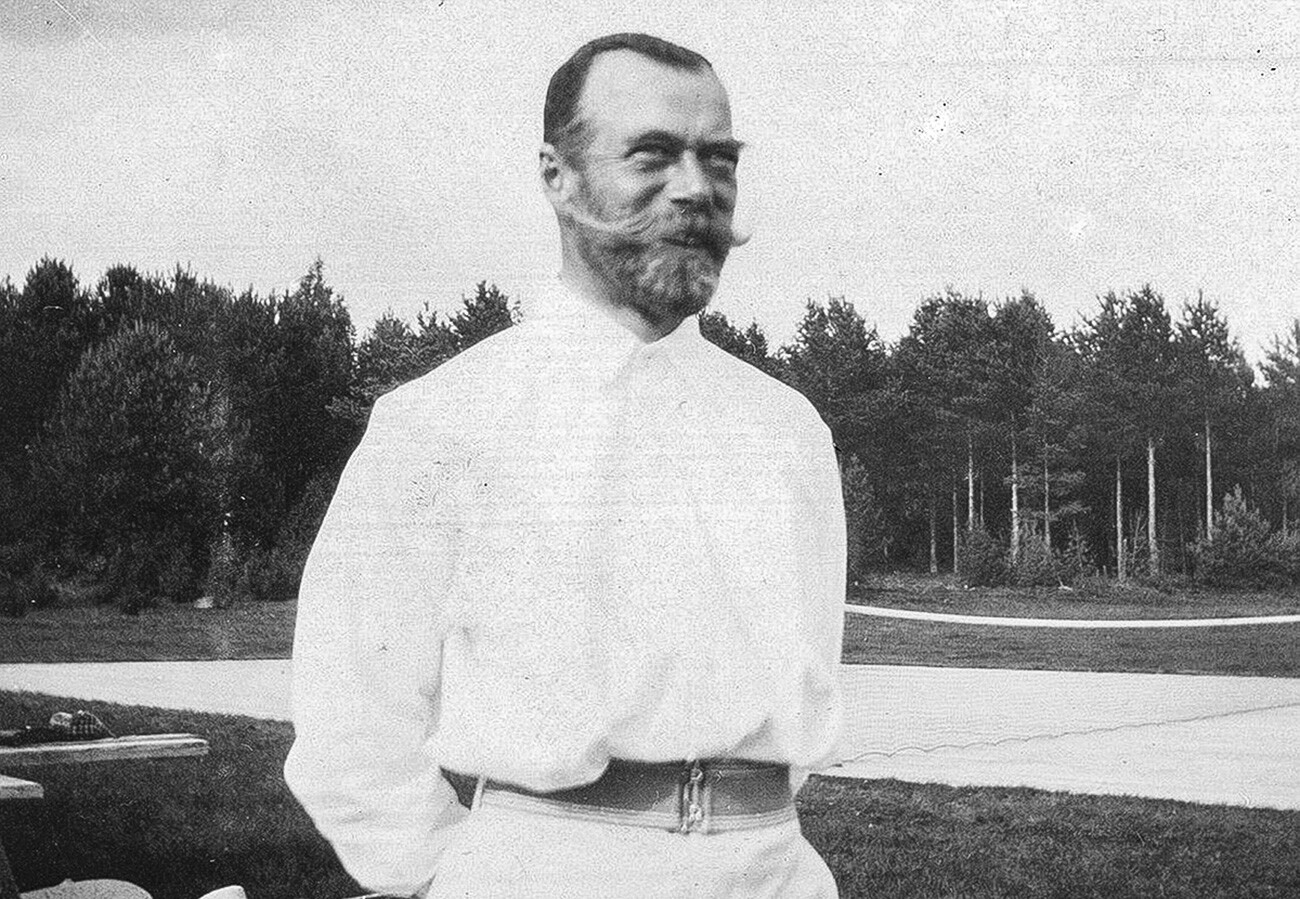
Nicholas II during a tennis game
Public domainUnlike his predecessors, Nicholas II often drank vodka. For example, in August 1904, he wrote in his diary: "After driving around all the canteens of the lower ranks and fairly loaded with vodka, I reached the Officers' Assembly.”
As historian Igor Zimin writes: "This was partly a consequence of the ‘representative work’, since, in each of the numerous canteens, the emperor was presented with a rather large cup, which he, as a ‘real colonel’, had to turn bottoms up heroically." The traditional Russian military cup is about 120 milliliters.
The tsar neither drank white nor red wine – he only drank champagne and forced the court to switch to the Russian ‘Abrau-Durso’ instead of French champagnes and foreign sparkling wines.
Among other drinks, Nicholas II, as Igor Zimin writes, appreciated the ‘slivovitza’ (plum vodka) from the cellars of Grand Duke Nikolai Nikolaevich and port wine, a couple of glasses of which he always drank before dinner. In August 1906, the tsar recorded: “I tried six varieties of port wine and got slightly juiced, which made me sleep marvelously.”
If using any of Russia Beyond's content, partly or in full, always provide an active hyperlink to the original material.
Subscribe
to our newsletter!
Get the week's best stories straight to your inbox